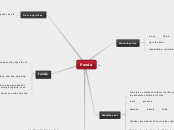arabera JOHANNA MORALES 10 years ago
1871
Panda

arabera JOHANNA MORALES 10 years ago
1871

Honelako gehiago
when i mom has twins one of the babies get to share time with there mom while one is with the other one goes with humans and there they feed them
A baby Giant Panda only weighs approximately 1/900th of the weight of an adult.
Normally giant pandas give birth to a single cub (they're monotocous). Even if a female has two cubs, she would normally choose to take care of one and abandon the other.
fruits